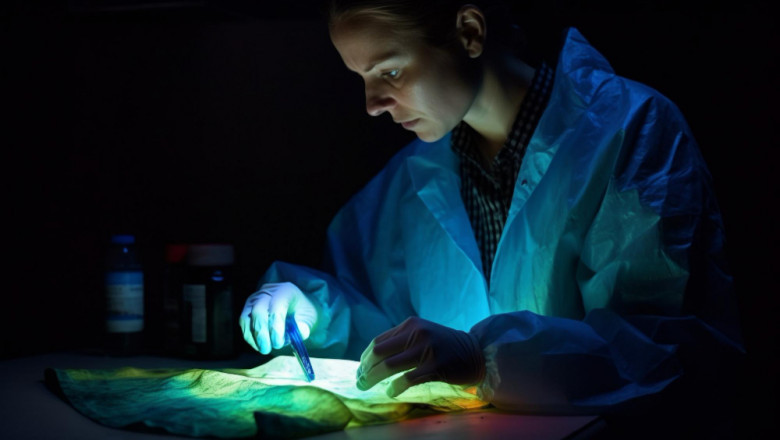views
3D printing in healthcare has the potential to not only enhance the accuracy and efficiency of medical treatments but also improve patient outcomes significantly. The growing interest and investment in the 3D bioprinting market reflect the transformative potential of this technology. This article explores how 3D bioprinting is reshaping healthcare and what its future holds.
What is 3D Bioprinting?
3D bioprinting involves the use of specialized printers that extrude layers of bioinks made from living cells, growth factors, and biomaterials to create functional tissue structures. Unlike traditional 3D printing, which uses plastics and metals, bioprinting in healthcare uses biological materials, which makes it possible to print tissues and organs with the potential for implantation in humans. The ultimate goal of 3D bioprinting is to create customized, living tissues that can be used in medical treatments, offering solutions for organ shortages, drug testing, and much more.
Applications of 3D Bioprinting Technology
1. Organ and Tissue Engineering
One of the most exciting possibilities of 3D bioprinting technology is its ability to create functional tissues and even organs. Currently, there is a severe shortage of donor organs worldwide, and the process of organ transplantation has limitations, such as immune rejection. 3D bioprinting could provide a solution by enabling the creation of personalized tissues that match the patient's own biology, significantly reducing the risk of rejection.
Researchers are already printing small-scale tissues such as skin, cartilage, and liver cells for clinical applications. In the future, the hope is to print more complex organs like kidneys and hearts, potentially solving the organ shortage crisis.
2. Personalized Healthcare and Drug Development
Another major advantage of 3D printing in healthcare is the ability to create patient-specific models for surgical planning and treatment. Surgeons can use 3D-printed models to practice complex procedures before operating on patients, leading to better outcomes and fewer complications.
Additionally, 3D bioprinting technology plays a crucial role in drug development. It enables the creation of tissue models that mimic human organs, which can be used to test the effects of drugs more accurately than traditional animal models. This can shorten the development timeline and reduce the cost of bringing new drugs to market.
3. Wound Healing and Regenerative Medicine
3D bioprinting has also shown promise in regenerative medicine, particularly in wound healing. For patients with severe burns or large wounds, 3D printing can be used to print skin grafts or layers of tissue that promote healing and tissue regeneration. By customizing the printed tissue to match the patient’s specific needs, bioprinting could speed up recovery and improve outcomes for patients with chronic or complex wounds.
In regenerative medicine, bioprinting also holds the potential to create replacement tissues for damaged or diseased areas, such as cartilage for joints or neurons for neurological conditions.
4. Surgical Implants and Prosthetics
Another important application of 3D bioprinting in healthcare is the creation of customized surgical implants and prosthetics. 3D printing allows for the production of highly personalized prosthetic limbs and implants that are tailored to the individual’s anatomy. This can improve the comfort, function, and aesthetic of these devices compared to traditional ones. For example, 3D-printed bone implants that match a patient's bone structure can reduce the risk of complications and improve the success rate of surgeries.
The 3D Bioprinting Market
The 3D bioprinting market is expected to see significant growth in the coming years as the technology matures and more applications are discovered. According to industry reports, the market is projected to reach billions of dollars by the end of this decade. This growth is driven by increasing investments in research and development, the rising demand for personalized medicine, and advancements in technology that make 3D printing more accessible and cost-effective.
Companies in the healthcare sector, including pharmaceutical firms and medical device manufacturers, are increasingly adopting 3D bioprinting technology to create new products and improve patient care. The market is also attracting investment from both public and private sectors, with governments and universities funding research in bioprinting to advance healthcare solutions.
Challenges and Future Outlook
While the potential of 3D bioprinting technology in healthcare is immense, there are still several challenges to overcome. The complexity of printing fully functional organs and tissues is a significant hurdle, as it requires a deep understanding of biology, biomaterials, and bioengineering. Additionally, there are regulatory and ethical concerns related to the use of bio-printed tissues and organs, particularly in human clinical applications.
However, the future outlook for 3D bioprinting in healthcare remains promising. With ongoing advancements in materials science, printing techniques, and biocompatibility, the healthcare industry is likely to see more widespread use of bio-printed tissues and organs for clinical applications. As the technology matures and regulatory frameworks evolve, 3D bioprinting could play a key role in reducing healthcare costs, improving patient outcomes, and addressing critical challenges like organ shortages.
Conclusion
3D bioprinting technology is revolutionizing healthcare by offering innovative solutions in tissue engineering, personalized medicine, drug development, and regenerative medicine. As the 3D bioprinting market continues to grow, it holds the promise of transforming the way medical treatments are designed and delivered. However, challenges such as technical limitations, regulatory hurdles, and ethical considerations must be addressed to fully realize its potential. With continued research and development, 3D printing in healthcare is poised to change the landscape of medicine, offering new hope for patients and healthcare providers alike.






















Comments
0 comment